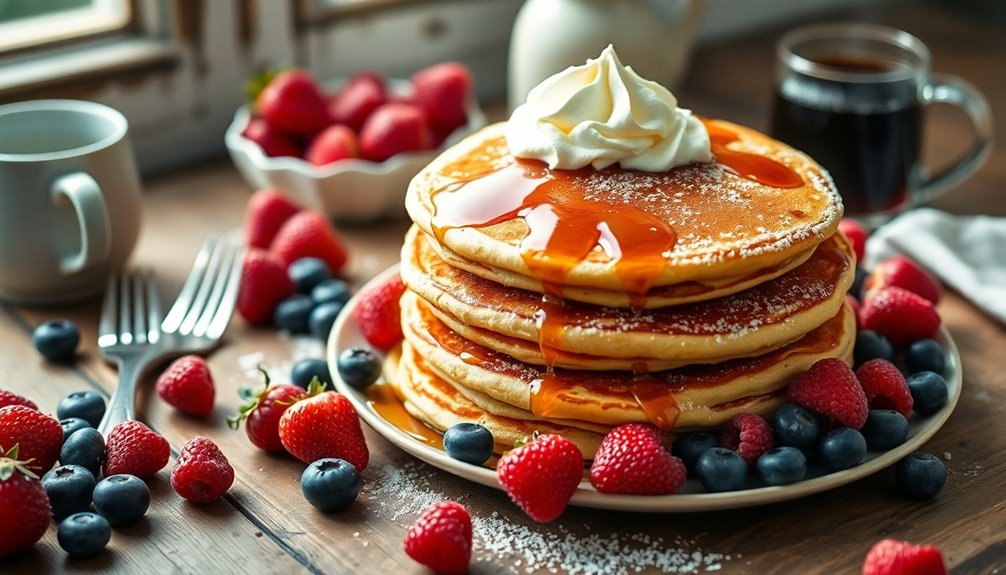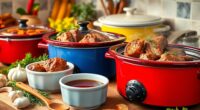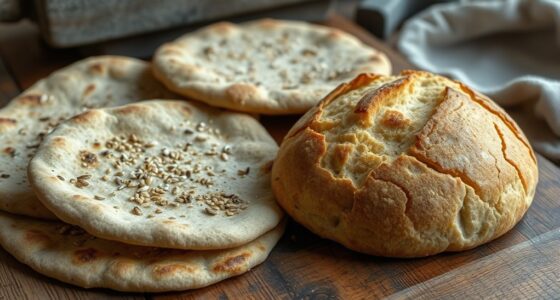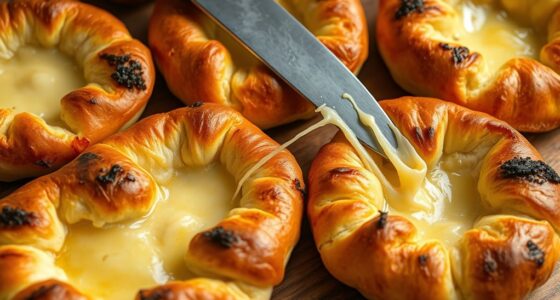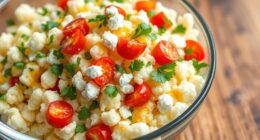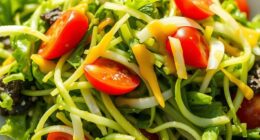Pancakes with yeast and cream offer a delightful twist on your breakfast routine, giving you a rich and fluffy texture. You'll activate the yeast with warm milk and sugar, then mix in flour and cream for added richness. After a brief resting period, folding in whipped egg whites will make them extra light. Serve them hot with your favorite toppings, like fresh berries or honey, and you'll impress everyone at the table. Discover more tips to elevate your pancakes!
History
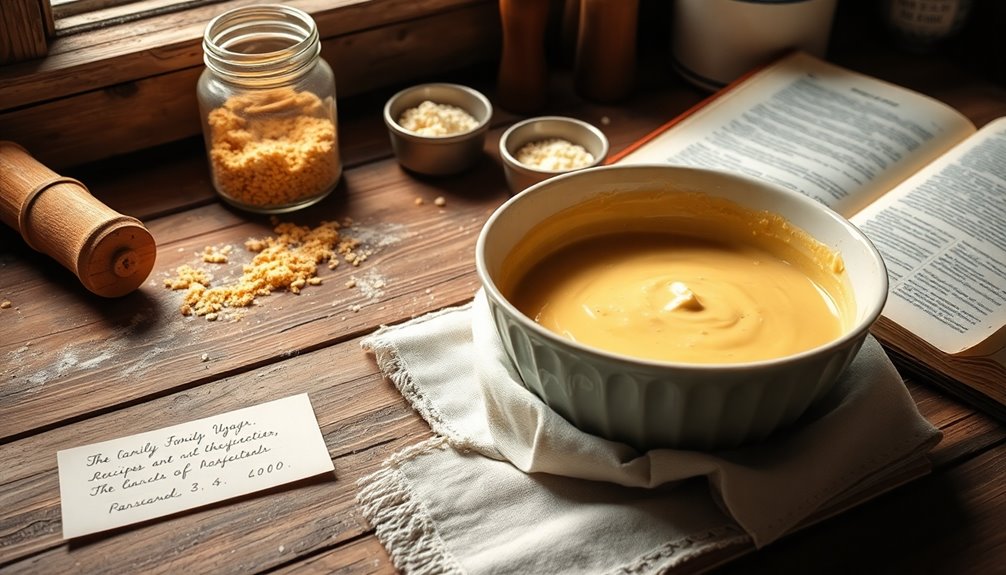
As you explore the history of yeast pancakes, you'll find that these delightful treats have roots in various cultures, dating back to ancient civilizations that utilized fermented dough to create fluffy flatbreads.
The use of yeast in pancakes became prominent during the Middle Ages in Europe, where it was favored for providing a lighter texture compared to unleavened versions.
During the Middle Ages, yeast pancakes gained popularity for their delightful lightness, surpassing the denser unleavened varieties.
Traditional recipes, like Russia's oladi and Morocco's baghrir, often incorporate dairy products such as cream or milk, enhancing both flavor and texture.
The fermentation process not only leavens the batter but also adds complex flavors, setting yeast pancakes apart from those made with baking powder.
Over centuries, their global appeal has led to modern variations that continue to celebrate these rich culinary traditions. Additionally, the incorporation of fermented dough in various baked goods showcases the versatility and historical significance of yeast in cooking.
Recipe
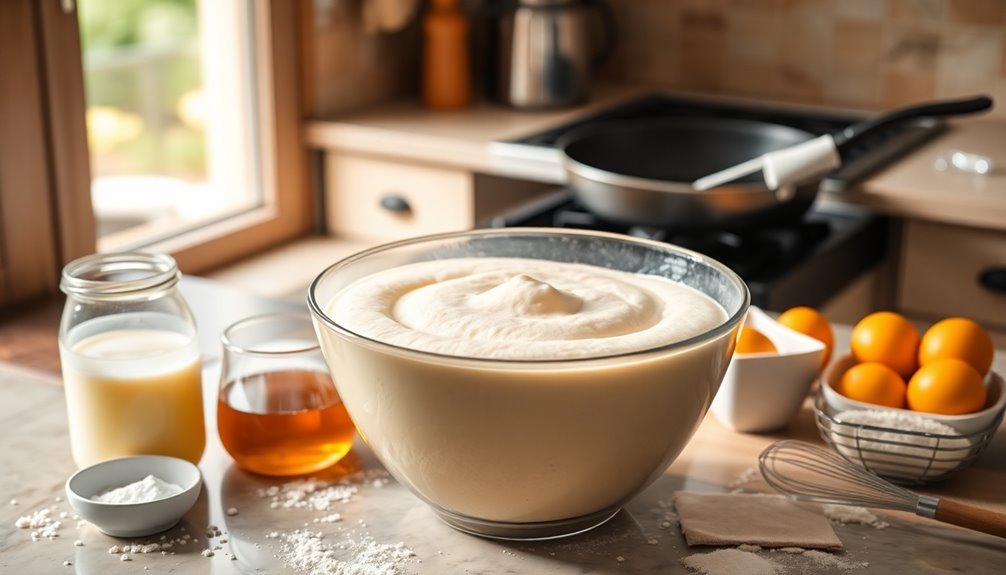
Indulge in the delightful experience of making yeast pancakes with cream, which are perfect for brunch or a special breakfast treat.
These pancakes are incredibly fluffy and rich, thanks to the addition of cream, which elevates their flavor and texture. With the right balance of ingredients, you'll create a batter that will rise beautifully, yielding light and airy pancakes that everyone will love. The yeast fermentation process is essential for achieving this lightness and texture.
To achieve the best results, patience is key as the yeast works its magic. Allow the batter to rise for about an hour, giving it ample time to double in size.
Once cooked to a golden brown perfection, these pancakes can be topped with your favorite fruits, syrups, or a drizzle of honey, making them an irresistible delight for any occasion.
Ingredients:
- 2 cups all-purpose flour
- 2 tablespoons sugar or honey
- 1 packet (2 ¼ teaspoons) active dry yeast
- 1 cup milk or cream
- 2 large eggs
- ¼ teaspoon salt
- Butter or oil for cooking
Instructions:
In a large mixing bowl, combine the flour, sugar, yeast, and salt.
In a separate bowl, whisk together the milk (or cream) and eggs until well blended. Gradually add the wet ingredients to the dry ingredients, mixing until just combined.
Cover the bowl with a clean kitchen towel and let the batter rise in a warm place for about an hour, or until it has doubled in size.
Once risen, preheat a non-stick skillet or griddle over medium heat and lightly grease with butter or oil.
Pour a ladleful of batter onto the skillet for each pancake, cooking for about 2 minutes on each side or until golden brown.
Extra Tips:
For the best flavor, consider using whole milk or heavy cream, as the extra fat content will enhance the richness of your pancakes.
Ensure your yeast is fresh for optimal rising, and feel free to experiment with toppings like yogurt, nuts, or chocolate chips to customize your pancakes.
If you have leftover batter, it can be stored in the refrigerator for up to 24 hours, allowing for quick breakfasts throughout the week.
Enjoy your fluffy creations!
Cooking Steps
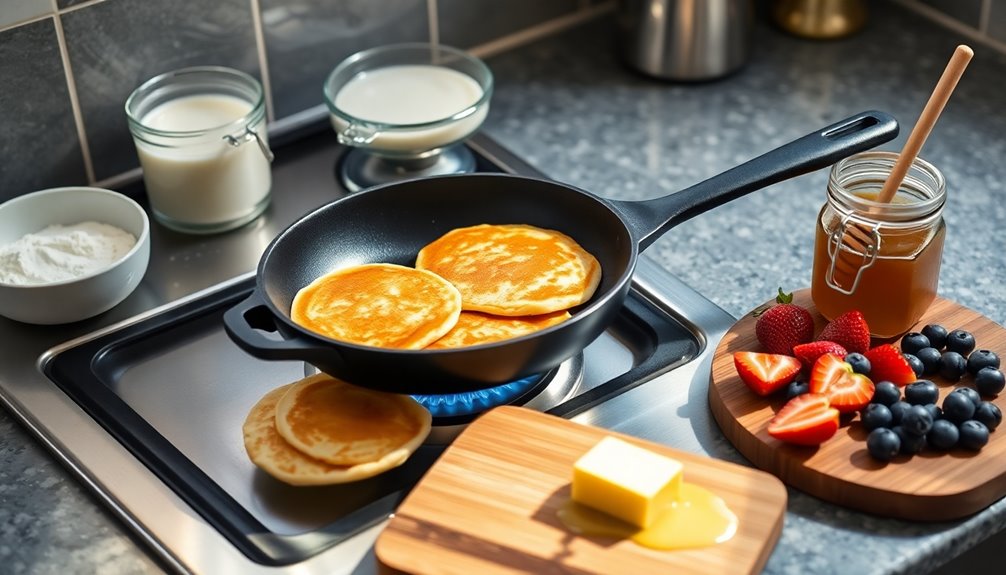
To start making your pancakes, you'll first activate the yeast mixture with warm milk and sugar.
Once that's frothy, mix in the flour and gradually incorporate cream for a rich batter.
After letting it rest briefly, you can fold in whipped egg whites for an extra light texture. Additionally, using eggs in your batter can provide essential nutrients that enhance the overall nutritional profile of your pancakes.
Step 1. Activate the Yeast Mixture
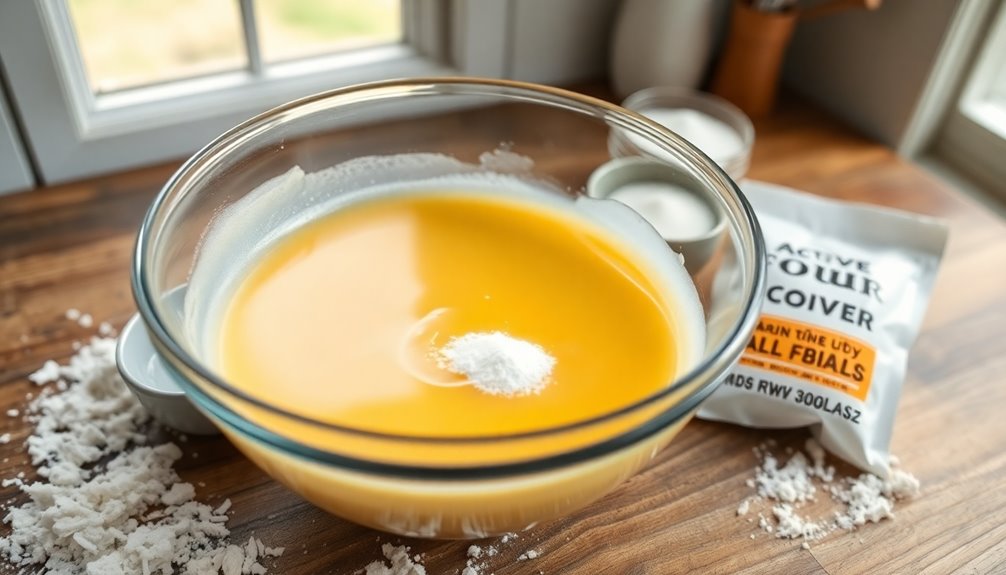
Activating the yeast mixture is a crucial step in creating light and fluffy pancakes. To start, combine warm milk (between 105-110 degrees Fahrenheit) with the yeast and a small amount of sugar.
Let it sit for about 5-10 minutes, and watch as bubbles form. If you're using active dry yeast, make sure to proof it first; instant yeast can go straight into your dry ingredients. The yeast should double in size and become bubbly, indicating it's ready to use. Proper yeast activation is essential to ensure your pancakes rise beautifully and achieve the desired texture.
Step 2. Mix in the Flour

Once the yeast mixture is frothy and ready, you can start incorporating the flour.
Begin by gradually adding all-purpose flour to the yeast mixture while stirring continuously. This ensures you combine the ingredients smoothly and avoid lumps. As you mix, you'll notice the batter thickening, which is a good sign that you're on the right track.
Next, add in eggs, melted butter, and any desired flavorings like vanilla to enhance the recipe.
It's important to let the batter rise at room temperature for about an hour, allowing it to double in size and develop a bubbly texture. This fermentation time is key to making pancakes that are great and fluffy! Additionally, understanding the importance of diversification can help you make better choices when investing in various areas of your life.
Step 3. Incorporate Cream Gradually
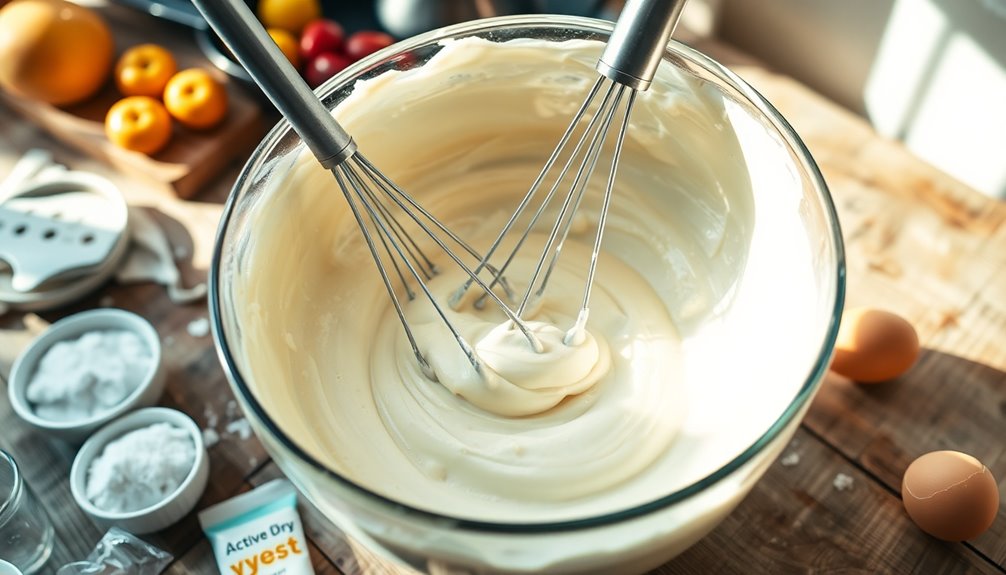
Now that your batter has risen beautifully and is ready for the next step, it's time to enhance it with cream.
In a separate bowl, mix the cream with the wet ingredients, including milk and eggs. This helps to achieve a rich and fluffy texture.
Gradually incorporate this creamy mixture into the pancake batter. Use a whisk to combine everything smoothly, ensuring no lumps remain, as they could affect your pancakes' consistency.
Adjust the amount of cream to your preference, typically between 1/4 to 1/2 cup for a standard batch.
Once combined, let the batter rest briefly in a warm place before you cook the pancakes. This resting period will help improve the overall texture and flavor. Incorporating whole foods into your breakfast options will enhance the nutritional value of your meal.
Step 4. Let Batter Rest Briefly

As you prepare to cook your pancakes, allowing the batter to rest briefly is essential for achieving that perfect fluffy texture.
During the resting period, the yeast in your batter activates and promotes fermentation, creating gas bubbles that help the batter rise. Aim for about 30 minutes in a warm place, which encourages this process and improves the flavor and texture of your yeast pancakes.
Make sure to cover the batter to prevent it from drying out or forming a crust on the surface. This hydration of starches not only leads to a better consistency but also enhances the overall pancake structure when cooked. Additionally, the impact of fermentation on the batter contributes to a light and airy texture that elevates your pancakes to the next level.
Trust this step; it's key to delicious pancakes!
Step 5. Fold in Whipped Egg Whites
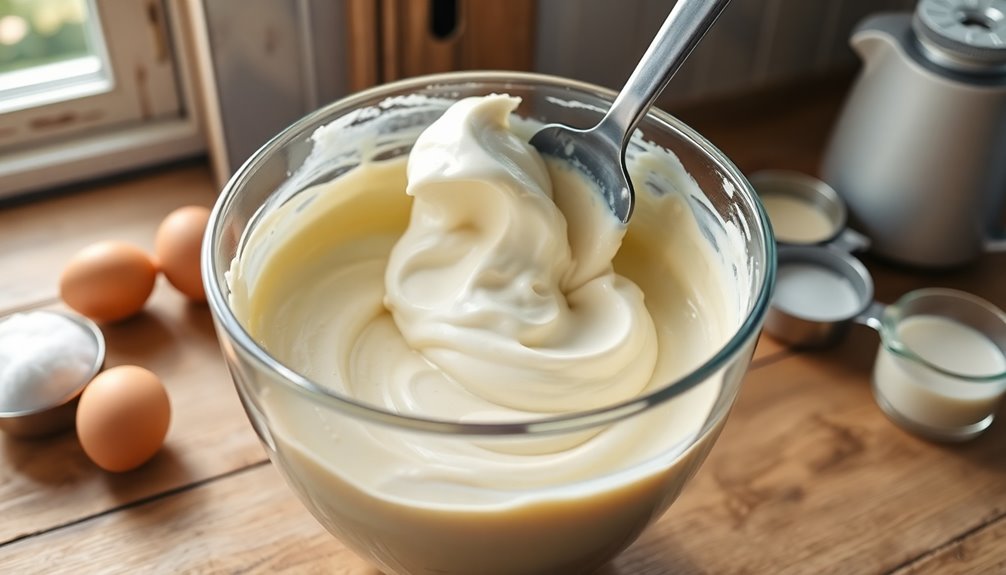
Gently fold in whipped egg whites to elevate your pancake batter's texture.
Start by beating the egg whites until soft peaks form, allowing air to incorporate for that fluffy lift.
When you're ready, use a spatula to cut through the batter and lift it over the whipped egg whites.
Avoid stirring vigorously; you want to maintain the airy structure for those perfect cooked pancakes.
This technique enhances the overall volume of your batter, resulting in tender, fluffy pancakes.
Once cooked, serve them immediately to enjoy their optimal lightness. Additionally, pairing your pancakes with a cup of herbal tea can complement the meal with its soothing properties.
Top with whipped cream or fresh fruit for a delightful finish to this pancake recipe.
Your family and friends will love the elevated texture and flavor!
Final Thoughts
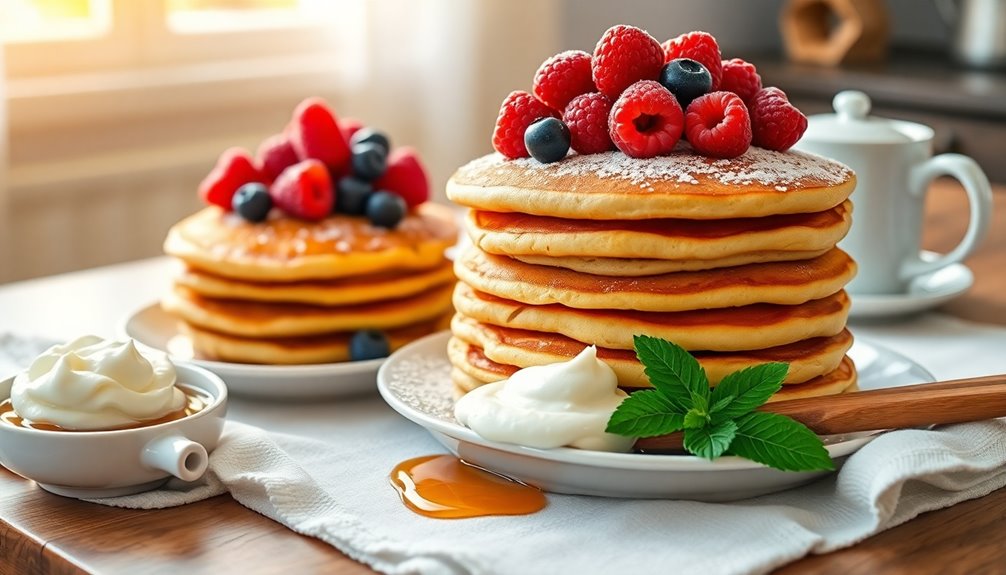
Ultimately, yeast pancakes with cream offer a delightful twist on a classic breakfast favorite. When you combine active dry yeast with flour and cream, you create great pancakes that are rich and fluffy.
The fermentation process adds depth to the flavor, while the cream ensures moisture and tenderness. If you added a little vanilla to the pancake batter, it elevates the taste even more.
Pour melted butter over your pancakes before topping them with whipped cream or double cream, allowing fresh berries to add a burst of flavor. Each bite becomes an indulgent experience as the nooks and crannies hold the cream and syrup beautifully.
Perfect for special occasions or cozy brunches, these pancakes are sure to impress! Additionally, using high-quality butter can enhance the overall richness and flavor of your pancakes.
Frequently Asked Questions
Can I Use Cream Instead of Milk for Pancakes?
Yes, you can definitely use cream instead of milk for pancakes!
It'll give your pancakes a richer, creamier texture due to the higher fat content. Just remember to dilute the cream with water, typically a 1:1 ratio, to mimic milk's consistency.
Using cream enhances the flavor, making your pancakes taste more indulgent.
Keep an eye on the cooking time, though, as the extra fat might cause them to brown faster.
Enjoy your delicious pancakes!
What Is Queen Elizabeth's Pancake Recipe?
If you're curious about Queen Elizabeth's pancake recipe, it's quite simple yet delightful.
You'll need flour, eggs, milk, and a touch of sugar. Start by whisking the eggs thoroughly to achieve that light, fluffy texture.
Combine all the ingredients gently, and cook them on a hot griddle. Serve them warm, topped with double cream and fresh fruits for an indulgent treat.
It's a classic British fare that celebrates tradition and family gatherings!
Do Pancakes Have Yeast in Them?
No, pancakes don't typically have yeast in them unless you're specifically making yeast pancakes.
Most traditional recipes use baking powder as a leavening agent. If you want a fluffier texture, you might consider trying yeast pancakes, which require some rise time for the batter.
This fermentation process creates a unique flavor and airy consistency you won't get with regular pancakes.
What Is the Secret to Making the Best Pancakes?
You might think any pancake recipe will yield a great result, but the secret lies in the details.
To make the best pancakes, you need to focus on your ingredients and technique. Using fresh ingredients, like warm milk to activate your baking agent, enhances flavor.
Letting the batter rest allows it to rise, creating a tender texture. Finally, cooking on a preheated non-stick skillet gives you that perfect golden-brown finish.
Enjoy your pancakes!
Conclusion
You might think pancakes with yeast and cream sound too complicated, but trust me, they're worth it! The unique texture and flavor elevate your breakfast game like nothing else. Plus, the process is easier than you'd expect. Just let the yeast do its magic while you enjoy a cup of coffee. Once you try these fluffy delights, you'll never go back to regular pancakes again. So grab your ingredients and start whipping up something special today!
